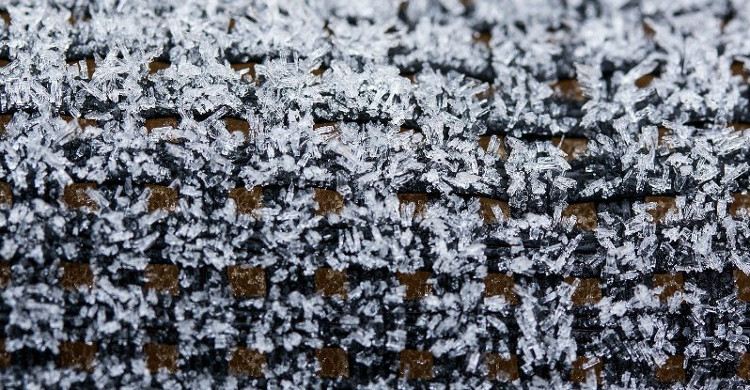For the first time know the mysterious arrangement of crystals
By using new techniques, the team showed that the crystal arrangement force is Van der Waals force. This is a kind of molecular force generated by the polarization of molecules into electric dipoles, caused by fluctuations in charge distribution in electrons.
This force is a quantum attraction and it does not depend on any chemical bond (as covalent bonds keep molecules close together).
Crystals are among the most attractive structures in the natural world. Because they are unique grid structures, arranged in a strict manner and have perfect repetition. When placed side by side, small crystals will attach to each other to form larger crystals. And for the first time, scientists visualized and measured the forces that created all this.
This was also the force that allowed the lizard's feet to stick to the walls and ceiling. Scientists have now shown that it is also effective in combining crystals and allowing them to grow larger and larger.

The arrangement of the crystals is very mysterious.(Photo: Pixabay).
Although many crystal structures are shaped like cubes, they often have many different sides, some of which fit together, some do not. When the edges match, the crystal can be combined together seamlessly. It has long been suspected that crystals can arrange themselves, but no one can imagine or measure exactly how this happened.
Knowing how the forces work is important, because this gravity is the key to self-assembling crystals in nature to form everything from rocks and shells to human bones. This is also essential for scientists to design new materials from crystals.
Kevin Rosso, a leading researcher from the US Department of Energy's Northwestern National Laboratory, said: "It is interesting that from these measurements we can build assembly models. 3D forms with particles attached together like Lego tiles. Crystals are everywhere in nature, and this work will help us take advantage of these powers when designing new materials. "
To study the repulsion of crystals in straight lines, the researchers combined environmental transmission electron microscopy (ETEM) with a technology called "nanoparticle detector". These devices allow crystal observations to interact in real time.
The researchers took two titanium oxide crystals 1,000 times smaller than hair, folded them and twisted them at different angles. They then monitored their combination under a microscope.
The team compared what they saw with two magnets and moved them toward each other but on a much smaller scale. When the magnet is close enough, gravity cannot hold the two crystals together and they will separate. Trying to separate the crystals to measure lost forces.
These measurements help researchers determine the forces that combine crystals together. These forces are believed to draw down force and Van der Waals . Van der Waals forces are the weakest force in weak physical chemistry. It is also the result of the attraction of quantum mechanics between particles rather than the regular electrochemical attraction between positive and negative particles.

Although many crystal structures are shaped like cubes, they often have many different sides.
Scientists have studied this issue quite well, although they have to do work based on the strange scientific mechanism of quantum mechanics (as Neils Bohr once said: "Anyone who has not been shocked yet) because quantum theory still cannot understand it ").
This new discovery for the first time confirms the prediction of van der Waals forces discovered in the 1970s. Rosso said: "These are the first measurements and evidence that this force depends on whether the crystals How are they linked together, they are called revolving dependencies ".
"If the force depends on the rotation, it will contribute to orienting the ability of the crystal to combine freely in the water environment, such as increasing the success rate of the combination," Rosso said. .
Currently, researchers have learned about the reason for this combination of titanium oxide crystals. It also allows researchers to rely on these to make different materials, such as calcium carbonate, in shell crystals. It can also help scientists build new crystal materials in the future and this is useful for new technology
This entire study has been published in the journal Science.
- Trace time crystals in ... children's toys
- Scientists discover crystals may also be bent
- The mysterious 900 light source flashes on the surface of the Earth
- 3 suns appear at the same time - Mysterious premonitions or scientific phenomena?
- Seat layout works best for health
- Video: Discover the shape of a molecule
- Scientists have found a way to
- Vietnam moves to the Arctic if the world is rearranged according to population
- Video: Decoding about snow formation
- For the first time see rock formations
- Explanation of the mysterious tunnel helps
- 'Time loophole' and mysterious disappearances
 'Fine laughs' - Scary and painful torture in ancient times
'Fine laughs' - Scary and painful torture in ancient times The sequence of numbers 142857 of the Egyptian pyramids is known as the strangest number in the world - Why?
The sequence of numbers 142857 of the Egyptian pyramids is known as the strangest number in the world - Why? History of the iron
History of the iron What is alum?
What is alum?